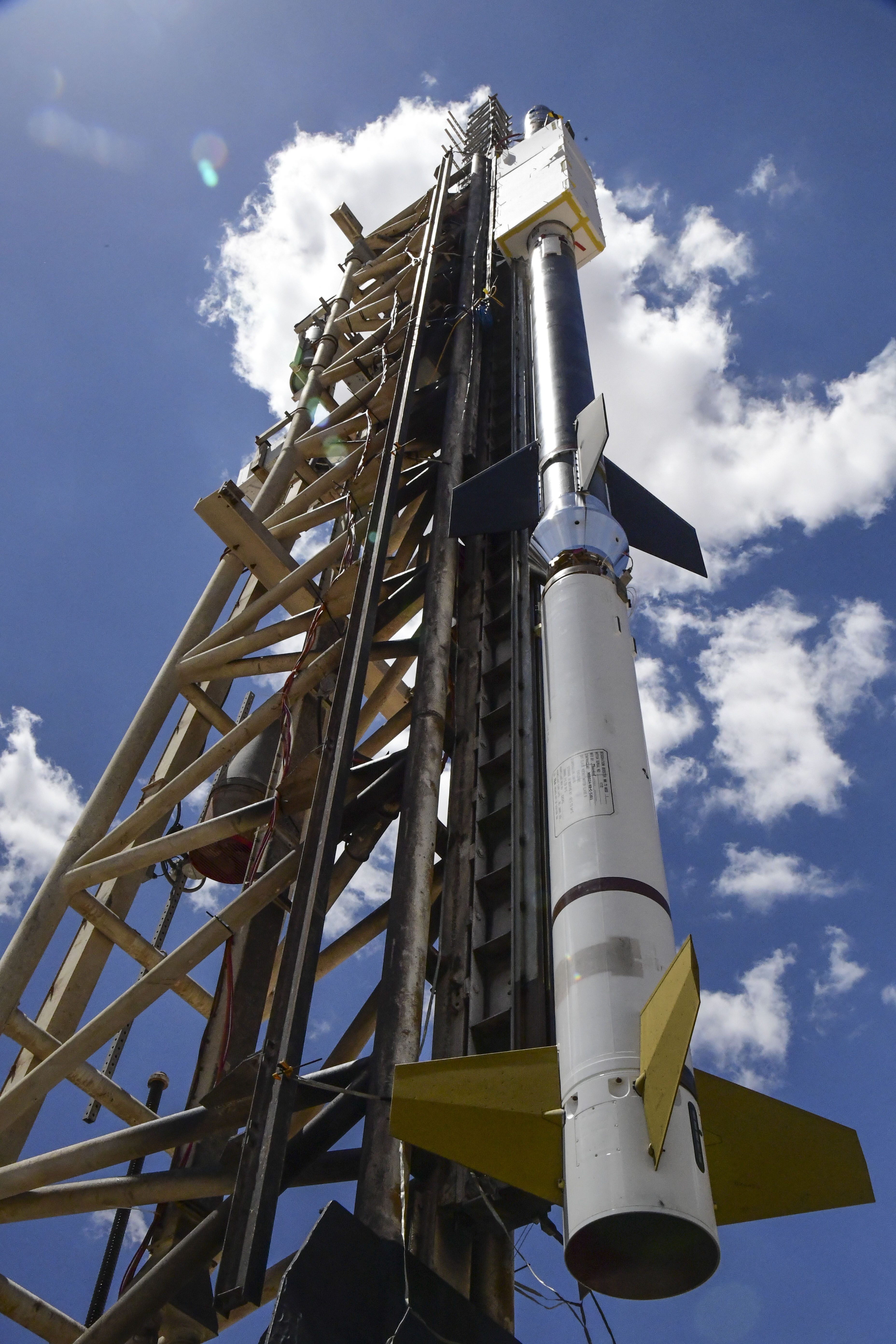
Although some rocket-borne missions last years or decades, others, such as the cast of NASA's Sounding Rockets Program, do their science during a short hop that doesn't even reach orbit.
The latest entry in that program, a payload designed to study the sun, lifted off from White Sands Missile Range in New Mexico on July 30. The mission, dubbed Marshall Grazing Incidence X-ray Spectrometer or MaGIXS, peered at the sun's corona, the ethereal white halo visible when the sun's face is obscured during a total solar eclipse.
The corona is full of scientific mysteries. In particular, while the sun's surface is already a metal-boiling 10,000 degrees Fahrenheit (5,500 degrees Celsius), the corona directly above it is hundreds of times hotter still, over a million degrees on either scale. Scientists don't fully understand how that happens.
Related: What's inside the sun? A star tour from the inside out
"Our knowledge of the corona's heating mechanisms is limited, partly because we've not yet been able to make detailed observations and measurements of the temperature distribution of the solar plasma in the region," Amy Winebarger, physicist at NASA's Marshall Space Flight Center in Alabama, said in a statement.
Scientists think that the mechanism that heats the corona is related to dramatic outbursts of light and plasma that scientists call solar flares and coronal mass ejections. (These outbursts can strike Earth or spacecraft and wreak havoc on electronics, so MaGIXS and other research on these processes could make future spaceflight safer.)
But the details of these phenomena are still unclear.
Get the Space.com Newsletter
Breaking space news, the latest updates on rocket launches, skywatching events and more!

Developed by Marshall and the Smithsonian Observatory in Massachusetts, MaGIXS consisted of a telescope, a high-powered camera and an X-ray spectrometer. That last instrument observed what scientists call "soft" X-rays, like those doctors use in medical scans.
Even though these soft X-rays carry comparatively less energy, observing them could still reveal what's happening inside the sun. And specifically, the scientists behind MaGIXS hope that these X-rays — and the mission's ability to map them and their temperatures to specific solar regions — will provide evidence of either sporadic or consistent heating in the corona.
And putting such instrumentation on a suborbital mission means that projects can launch with mere months of planning, instead of years, allowing NASA's Sounding Rockets Program to launch about 20 missions each year. In particular, sounding rocket flights can develop young techniques and scientists for more complex missions down the line.
Follow us on Twitter @Spacedotcom and on Facebook.
Join our Space Forums to keep talking space on the latest missions, night sky and more! And if you have a news tip, correction or comment, let us know at: community@space.com.

Rahul Rao is a graduate of New York University's SHERP and a freelance science writer, regularly covering physics, space, and infrastructure. His work has appeared in Gizmodo, Popular Science, Inverse, IEEE Spectrum, and Continuum. He enjoys riding trains for fun, and he has seen every surviving episode of Doctor Who. He holds a masters degree in science writing from New York University's Science, Health and Environmental Reporting Program (SHERP) and earned a bachelors degree from Vanderbilt University, where he studied English and physics.









